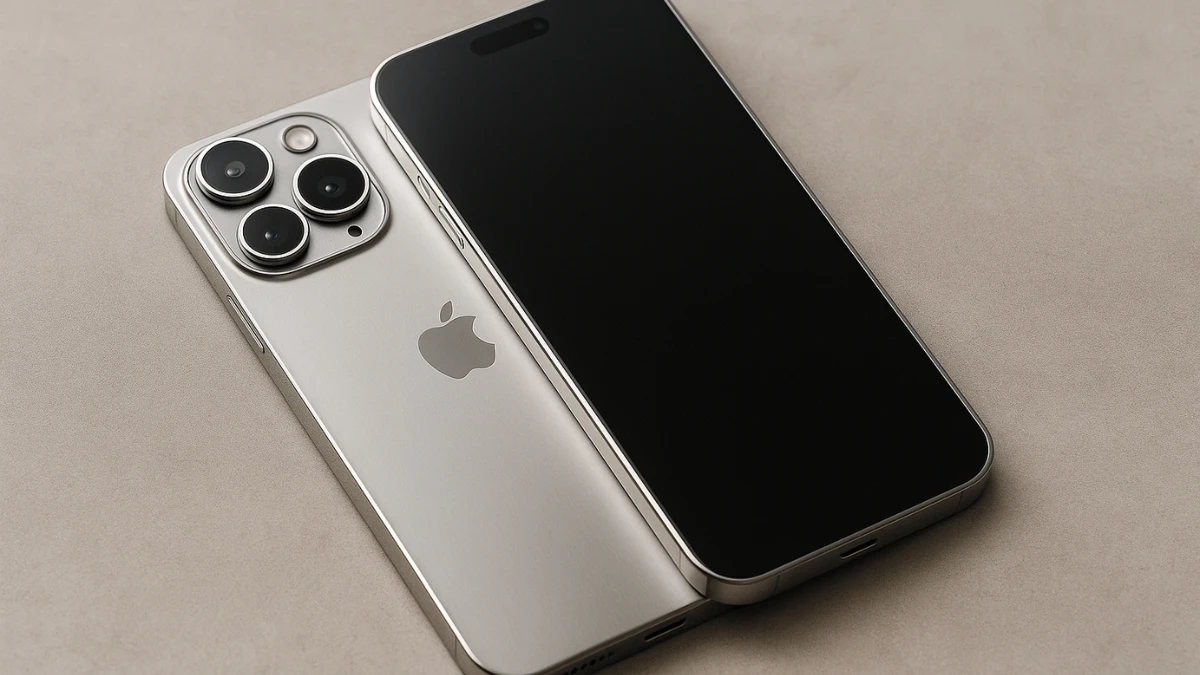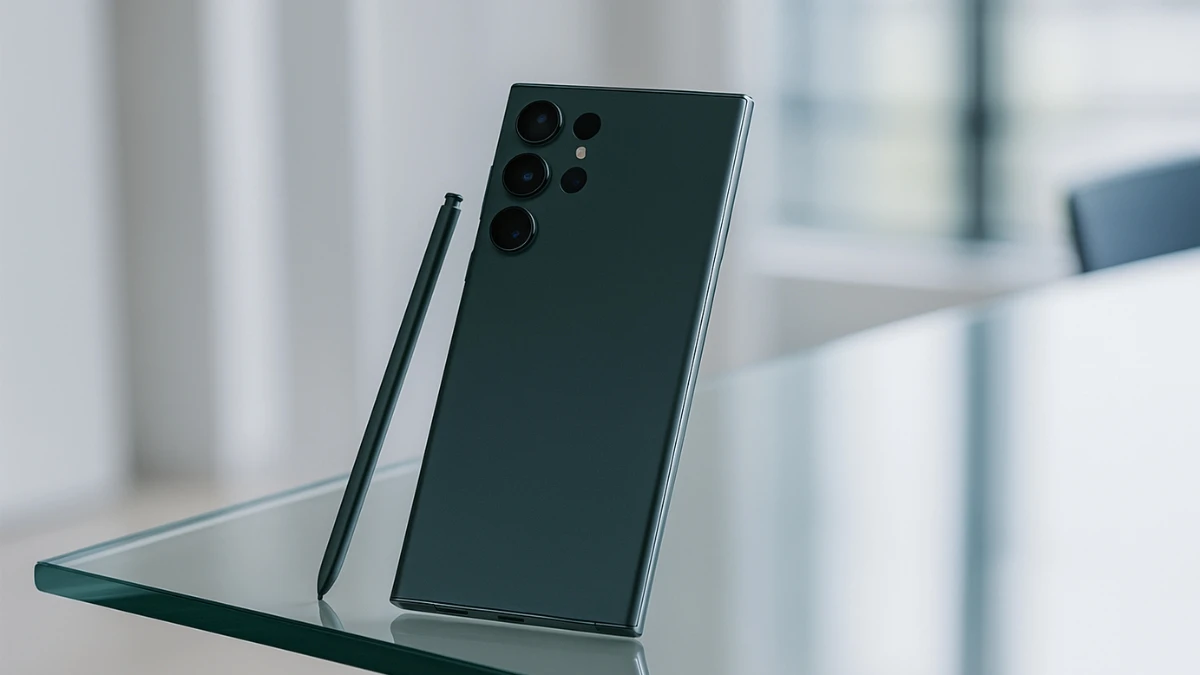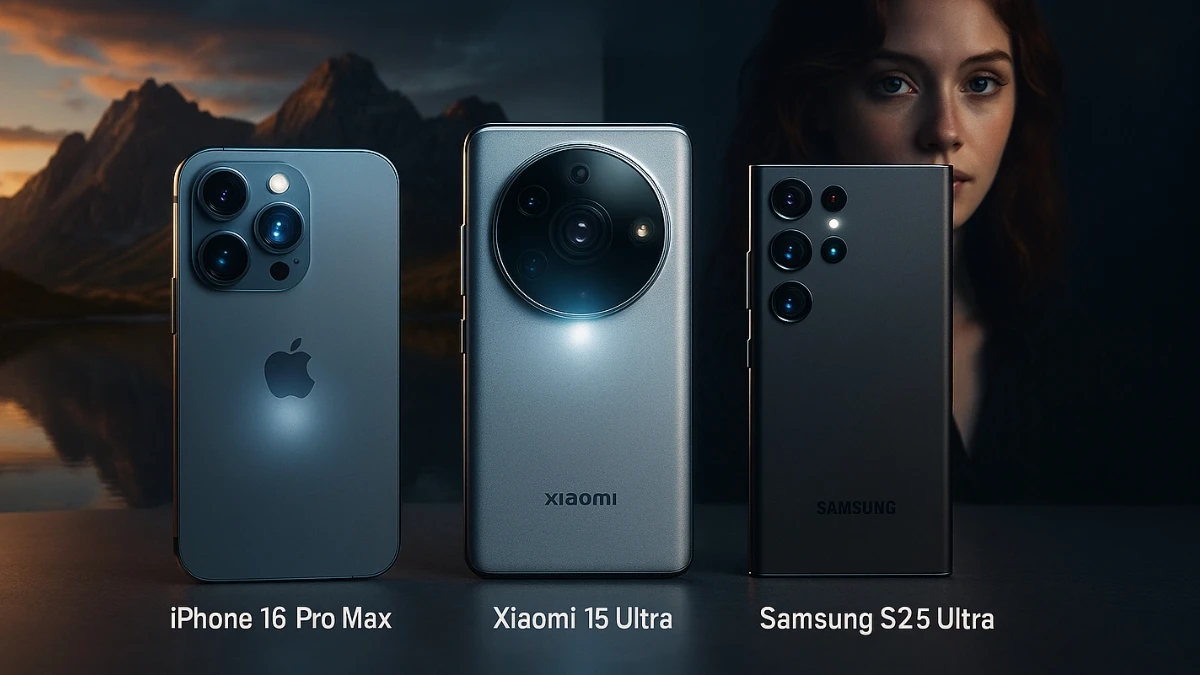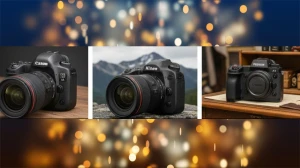Top 3 Best Camera Phones for Photography that Capture Photos Like a DSLR
The battle for smartphone photography supremacy is more competitive than ever in 2025. With cutting-edge hardware, advanced AI processing, and DSLR-level image quality, today’s flagship phones are pushing the boundaries of what mobile cameras can achieve. Whether you're a professional content creator, photography enthusiast, or everyday user who wants the best shots, choosing the right camera phone matters.
In this guide, we rank the top 3 camera phones of 2025—from video mastery to pure photography excellence—so you can decide which one best fits your creative needs.
| Rank | Mobile |
|---|---|
| #3 | iPhone 16 Pro Max |
| #2 | Xiaomi 15 Ultra |
| #1 | Samsung Galaxy S25 Ultra |
#3: iPhone 16 Pro Max - The Video Master

While the iPhone 16 Pro Max excels across all photography disciplines, its true strength lies in video capture and consistently natural image processing that appeals to traditional photographers.
Apple's approach to smartphone photography differs significantly from its Android competitors. Rather than pursuing dramatic, heavily processed images, the iPhone 16 Pro Max focuses on consistency, natural color science, and results that work seamlessly in professional workflows.
The 48MP main camera with sensor-shift OIS provides a stable foundation for both photos and videos. The upgraded 48MP ultra-wide camera represents a significant improvement over previous generations, while the 12MP 5x optical periscope zoom delivers sharp, detailed results across its range.
Where the iPhone 16 Pro Max truly shines is video capture. The 4K 120fps recording capability sets a new standard for smartphone videography, providing smooth slow-motion footage that rivals dedicated video equipment. Combined with Apple's industry-leading stabilization technology, you can capture professional-quality footage handheld, even while walking or moving.
The new Camera Control button adds a physical interface that feels familiar to DSLR users, providing quick access to key camera functions without navigating touch menus. This physical control enhances the shooting experience, especially for users accustomed to traditional cameras.
Apple's color science deserves special recognition. The iPhone processes images with a natural palette that closely matches what your eyes see, rather than the heavily saturated look preferred by some competitors. This approach produces images that look authentic and timeless, with excellent skin tone reproduction that flatters human subjects.
ProRes and ProRAW support ensure maximum flexibility for post-production work. Professional filmmakers and photographers can capture content with the technical specifications needed for serious editing and color grading workflows.
Perfect for: Video content creators and filmmakers who demand the highest quality footage, photographers who prefer natural, film-like results over heavily processed images, users deeply integrated into the Apple ecosystem, and professionals who need reliable, consistent performance across all shooting conditions.
#2: Xiaomi 15 Ultra - The Pure Photography Beast

For photography purists seeking the closest thing to a DSLR experience in smartphone form, the Xiaomi 15 Ultra stands in a class of its own. This device prioritizes pure image quality above all else, delivering results that satisfy even the most discerning photographers.
The centerpiece of the 15 Ultra's photography prowess is its 1-inch type main sensor—the largest available in any globally available smartphone. This massive sensor, combined with Xiaomi's refined processing algorithms, captures images with exceptional dynamic range and minimal noise, even in challenging lighting conditions.
What truly distinguishes the Xiaomi 15 Ultra is its approach to image processing. Where other phones might oversaturate colors or over-sharpen details for immediate visual impact, Xiaomi has opted for natural, film-like rendering that preserves the authentic character of your subjects. The result is images that look like photographs rather than digital composites.
The dual-telephoto system deserves special mention. Rather than relying on a single zoom lens, Xiaomi has implemented two telephoto cameras with different focal lengths, each optimized for specific shooting scenarios. The 200MP periscope camera delivers exceptional zoom image quality, maintaining detail and clarity even at significant magnifications.
Perhaps most interesting is the optional camera grip accessory that transforms the smartphone experience entirely. This add-on provides DSLR-like ergonomics and additional physical controls, making the phone feel and handle more like a traditional camera. For photographers transitioning from DSLRs, this accessory bridges the gap between smartphone convenience and familiar camera handling.
The 15 Ultra's thermal management system ensures consistent performance during extended shooting sessions—something that often plagues other flagship phones when pushed hard. This attention to sustained performance reflects Xiaomi's understanding of serious photographers' needs.
Perfect for: Photography purists who prioritize image quality above all else, professionals seeking a backup camera that doesn't compromise on quality, street photographers who value natural color rendering, and anyone transitioning from DSLR cameras who wants familiar handling characteristics.
#1: Samsung Galaxy S25 Ultra - The Versatility Champion

The Samsung Galaxy S25 Ultra claims the throne as 2025's most versatile camera phone, and the numbers back it up. Scoring an impressive 158 points in comprehensive camera testing—the highest rating currently available—Samsung's latest flagship represents the pinnacle of smartphone photography versatility.
What sets the S25 Ultra apart is its comprehensive approach to every photography scenario. At its heart sits a massive 200MP main camera with 2x optical quality zoom that captures life in breathtaking detail and vibrant, true-to-life colors.
But the real game-changer is Samsung's multi-lens strategy: a significantly upgraded 50MP ultra-wide lens (a major improvement over the previous generation's 12MP), a 50MP telephoto lens with 5x optical zoom, and a 10MP telephoto lens with 3x optical zoom.
This dual-telephoto approach delivers what experts describe as exceptional quality across all zoom ranges. Unlike phones that force you to choose between wide shots and distant subjects, the S25 Ultra provides optical quality whether you're shooting at 3x, 5x, or the impressive 10x optical zoom.
The result is sharp, detailed images that maintain quality even when you're photographing wildlife from a distance or capturing architectural details from across the street.
The phone's AI ProVisual Engine elevates performance beyond raw hardware specs. Samsung's computational photography creates images that are immediately shareable, with vibrant colors that pop on social media feeds.
The advanced night photography capabilities mean you can capture stunning low-light shots without carrying additional equipment.
Professional video features round out the package, with 8K recording capabilities and advanced stabilization that rivals dedicated video equipment. The S Pen integration adds a unique dimension for photo editing, allowing precise adjustments that would typically require desktop software.
Perfect for: Content creators and influencers who need eye-catching results, wildlife and sports photographers who require exceptional zoom capabilities, and anyone who wants a single device that excels across multiple photography scenarios. The Galaxy S25 Ultra is the Swiss Army knife of camera phones—versatile, reliable, and capable of handling whatever you throw at it.
What Makes a Camera Phone DSLR-Quality?
The journey toward DSLR-quality smartphone photography involves several critical technological breakthroughs that have converged in 2025's flagship devices.
Sensor Technology forms the foundation. Modern flagship phones now feature sensors approaching 1-inch type dimensions—significantly larger than previous generations.
These larger sensors capture more light, resulting in better dynamic range, reduced noise, and superior low-light performance that begins to rival entry-level DSLRs.
Advanced Optical Systems have evolved beyond simple point-and-shoot capabilities. Today's top phones feature multiple high-quality lenses with genuine optical zoom, professional-grade stabilization, and multi-element glass that minimizes distortion while maximizing sharpness.
AI-Powered Processing represents perhaps the most significant advancement. Modern smartphones can capture and merge multiple exposures in real-time, creating images with dynamic range and detail that surpass what traditional single-shot photography can achieve.
This computational approach often produces results that are technically superior to DSLR output straight from the camera.
Professional Controls complete the package. Features like RAW capture, manual focus control, exposure compensation, and professional video formats give photographers the flexibility they need for serious work.
The result? Phones that don't just take good pictures—they capture images with the technical quality, creative control, and professional features that serious photographers demand.
Performance Comparison
| Feature | Samsung Galaxy S25 Ultra | Xiaomi 15 Ultra | iPhone 16 Pro Max |
|---|---|---|---|
| Main Camera | 200MP, 2x optical zoom | 1-inch sensor, 50MP | 48MP, sensor-shift OIS |
| Ultra-Wide | 50MP | 50MP | 48MP |
| Telephoto | Dual: 50MP (5x) + 10MP (3x) | Dual telephoto system | 12MP (5x periscope) |
| Max Optical Zoom | 10x | 6x+ (varies by lens) | 5x |
| Video Capability | 8K, advanced stabilization | 8K, professional features | 4K 120fps, ProRes |
| Unique Features | S Pen integration, AI enhancement | Camera grip accessory | Camera Control button |
| Processing Style | Vibrant, social media-ready | Natural, film-like | Consistent, natural |
| Best For | Versatility and zoom | Pure image quality | Video and ecosystem |
Expert Tips for DSLR-Quality Mobile Photography
- Master RAW Shooting: Enable RAW capture on your chosen device for maximum editing flexibility. RAW files contain significantly more image data than JPEGs, allowing for dramatic adjustments in post-processing without quality loss.
- Understand Your Lenses: Each lens in a multi-camera system has optimal shooting scenarios. Use the main camera for general photography, ultra-wide for landscapes and architecture, and telephoto lenses for portraits and distant subjects.
- Leverage Computational Features Wisely: Modern smartphones offer powerful AI features, but knowing when to use them is crucial. Night mode works wonderfully in low light, but can over-process images in mixed lighting. Portrait mode excels with clear subject separation but struggles with complex backgrounds.
- Manual Controls Matter: Don't rely solely on automatic modes. Learn to adjust exposure compensation, ISO, and focus manually for consistent results across different shooting conditions.
- Post-Processing Workflow: Develop a consistent editing approach. Whether using mobile apps or desktop software, a systematic workflow will improve your final results and help maintain a consistent style across your photography.
Disclaimer:
The information provided in this article is based on publicly available sources, product specifications, early reviews, and expert analysis as of 2025. Features, performance, and availability may vary by region or software updates. Brand names, trademarks, and product models are the property of their respective companies (Samsung, Apple, Xiaomi). This content is intended for informational and comparative purposes only and does not represent official endorsements. For the most accurate and up-to-date details, consult the respective manufacturers or verified retail listings.






